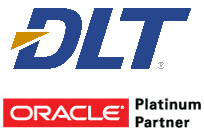4 questions to ask when moving to the cloud
 Cloud computing has become a viable option for many public sector organizations. The majority of public sector CIOs are assessing their cloud options. In a 2017 Center for Digital Government (CDG) research study, including a survey and interviews of more than 80 state government officials, 55 percent of respondents said they had moved email to the cloud, 42 percent had moved their content management systems and 37 percent had moved data backup.
Cloud computing has become a viable option for many public sector organizations. The majority of public sector CIOs are assessing their cloud options. In a 2017 Center for Digital Government (CDG) research study, including a survey and interviews of more than 80 state government officials, 55 percent of respondents said they had moved email to the cloud, 42 percent had moved their content management systems and 37 percent had moved data backup.
Yet cloud apprehensions still exist. Chief among them is security — in the same research survey, 53 percent of respondents said security was their top concern. They also face challenges around procurement, licensing, and implementing and integrating cloud services into their existing IT environments. But cloud migration doesn’t need to be a complicated endeavor. By planning upfront and collaborating with the right partner, public sector organizations can successfully migrate to the cloud, reducing costs while improving productivity and alleviating IT department workloads. Asking the following questions of your cloud provider will help ensure seamless migration.
1) How will you ensure my data is secure?
Seventy-four percent of CDG survey respondents said security regulations and requirements are the most important consideration in their decision-making process when moving to the cloud. Since security tops the list of CIO concerns, asking about security out of the gate is crucial when working with a cloud provider.
It’s important to determine who has access to and controls your data. Evaluate auditing capabilities so you know what is happening in your cloud implementation, and look for features like dashboards that provide visibility into service usage. Also, make sure your provider can adhere to all applicable regulatory requirements surrounding your data security, including meeting specific security elements of certifications required by law or your organization.
2) How do you assist with the procurement process?
Cloud procurement is a departure from traditional practices in the public sector where an agency makes an upfront capital investment to purchase a physical product. Since many states have not taken the steps to update their procurement processes, cloud purchasing is often adhoc. In the CDG research survey, only 42 percent of respondents had a formal cloud procurement roadmap in place.
It’s important to find a cloud provider with experience selling to the public sector. In addition to regulatory requirements for procurement, public sector organizations often are prohibited from paying for services in advance. Confirm your provider understands the regulations surrounding your procurement processes, and ask if they can help establish a cloud roadmap to avoid purchasing obstacles.
3) How can you help make the transition to a licensing model more seamless?
Procurement departments are not accustomed to the cloud licensing model, which is an ongoing expense versus an upfront fee. If they are not properly informed about this new model, it can create a roadblock in the cloud procurement process. In fact, in the CDG survey, nearly one-third of respondents said constraints between procurement and IT prevent cloud adoption.
Ask your provider to explain the subscription fee and pay-by-user models offered so you can educate stakeholders and ensure a more seamless procurement process. It’s important to receive pricing details for various infrastructure components. For instance, does the provider offer tiered storage? And if so, what are the different tier prices? Some providers may charge for things like loading and transferring data and accessing storage, so it’s critical to discover this upfront. It will help to lock in a contract price during negotiations that spans multiple years without price increases. Additionally, your cloud provider can assist with mapping the types of workloads that will be in the cloud with existing processes and IT components. This will help you choose the correct type of licensing agreement to meet your organization’s needs.
4) How will you assist with implementation?
A common challenge in migrating to the cloud is ensuring cloud services integrate with existing systems. The CDG research survey found that integration requirements are often missing from cloud procurement requests, as cited by 45 percent of respondents.
Your cloud provider can help develop a plan to roll out components incrementally, which will help smooth implementation. This can impact your licensing structure, so your cloud provider should understand how to map between the on-premises and cloud environments and set up the licensing and migration accordingly.
Additionally, some elements of your existing IT environment may not be suitable for a move to the cloud. In those cases, your solution provider should be able to assist with distinguishing between what can be moved to the cloud with minimal changes and what needs to be rearchitected for a cloud environment.
Reaping the benefits of migration
Whether you’ve already made the decision to migrate to the cloud or are still evaluating your options, know that the right solution provider can help you harness the benefits of the cloud. These include:
- Automatic maintenance. Cloudbased solutions automatically receive updates as they are created. Instead of manually updating every workstation or server, when the update is ready, it’s live when you log on to your system. This greatly alleviates your IT department’s workload.
- Lower or eliminated capital expenditures. In a time of limited resources, eliminating costly hardware purchases and reducing upfront investments can go a long way. Cloudbased solutions let you use your provider’s infrastructure and pay as you go, so you don’t have to come up with the full amount at the outset or replace components as they age.
Streamlined services. In addition to alleviating the burden on IT staff, cloudbased solutions can improve your IT footprint. Rather than build a new data center or hire more employees, hosting, maintenance and disaster recovery can be handled by your provider. - Better collaboration between departments. An added benefit of cloud-based solutions is the ability to collaborate across departments. Each department in the organization accesses the same data set, which makes it easier to have up-to-date information to provide to constituents or to use for internal purposes. Additionally, collaboration platforms can make it easier to communicate, share information and work on interdepartmental projects.
Conclusion
In public sector organizations, moving to the cloud can reduce costs, alleviate the burden on IT staff and ultimately help provide better service to constituents. Before moving to the cloud, evaluate providers carefully and ask critical questions around security, procurement, licensing and implementation to help ensure a seamless migration.
Learn more today on how you can take advantage of the cloud with DLT Solutions and U.S. Communities.
This piece was developed and written by the Center for Digital Government Content Studio, with information and input from DLT.




















